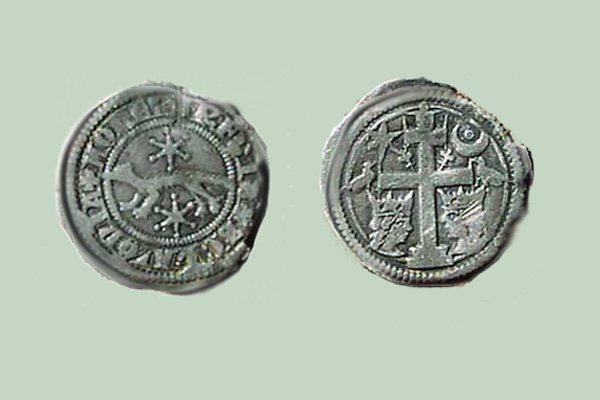Travel Croatia
Croatian History
RomWell Travel Advisory
Croatian Money
Croatian money is called kuna. Croatian kuna recently came into being after the break with Yugoslavia (1991-92). But long ago there was also a coin called the kuna in Croatia.
The kuna is a type of marten (related to the weasel and mink). In ancient times the kuna pelt was an export item from many regions of what is today Croatia. Around 1000 AD, the towns of Cres and Beli (on the island of Cres) had to pay an annual tribute in kuna pelts to the Venetian authorities. This was the first known instance of the kuna pelt being used directly as payment. Then, later, coins called kuna were minted.
Image: Old kuna coin dated to around 1250 AD. The scale is not obvious in the photo, but coin is about a half inch in diameter.
Note: The 4-legged animal right in the middle of the coin is kuna.
General Info About Money for Visitors
Croatian Money: Croatian Kuna (HRK) is the official currency of Croatia, and (1 kuna = 100 lipa). Kuna is also the best currency to use in Croatia. Euros is unofficially used in some situations, making it the best foreign currency to carry with you if you don't have Croatian Kunas on you.
Credit Cards: The majority of establishments and ATMs in Croatia will accept credit cards such as Visa, MasterCard, American Express and Diners, etc.
Foreign Money: Foreign currency is exchanged in the banks, exchange offices, travel agencies, hotels, camps, marinas. Cheques are cashed in the banks.
Related Links:
 History of the Croatian Language
History of the Croatian Language
 Croatian Adriatic Coast - The Jewel of the Mediterranean
Croatian Adriatic Coast - The Jewel of the Mediterranean



